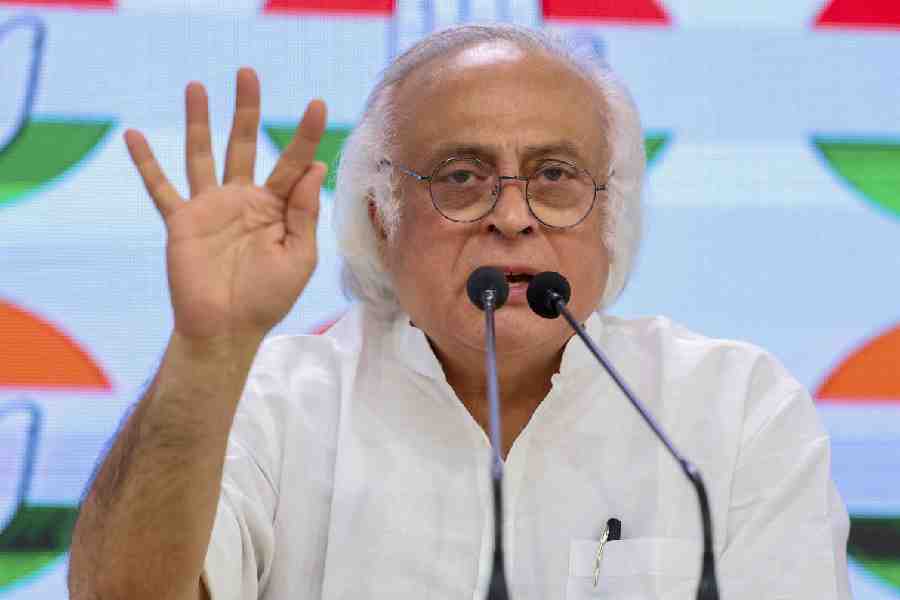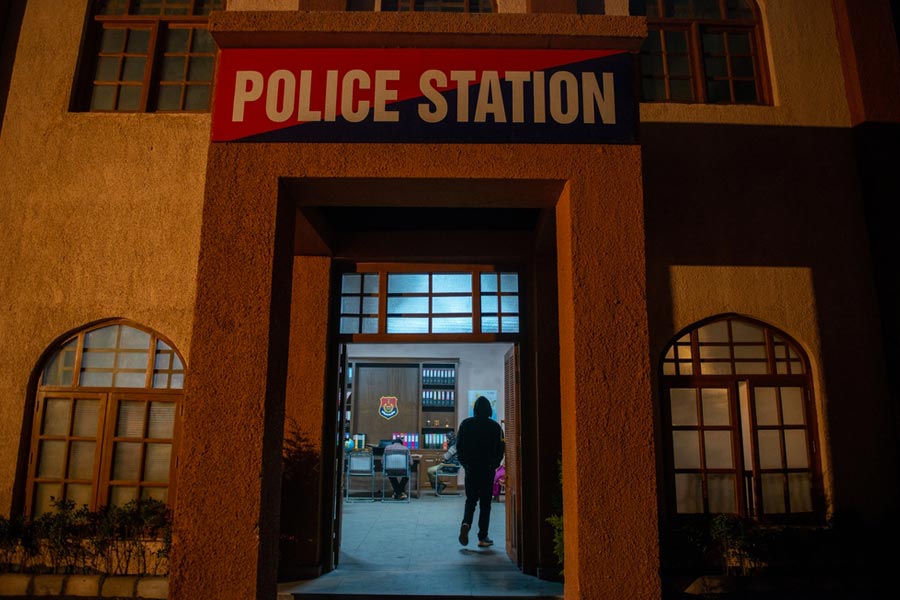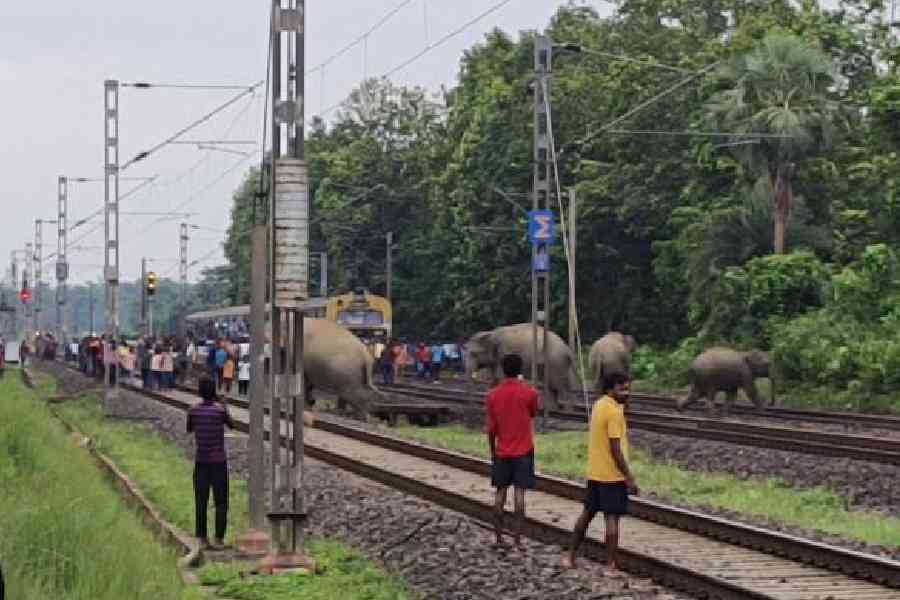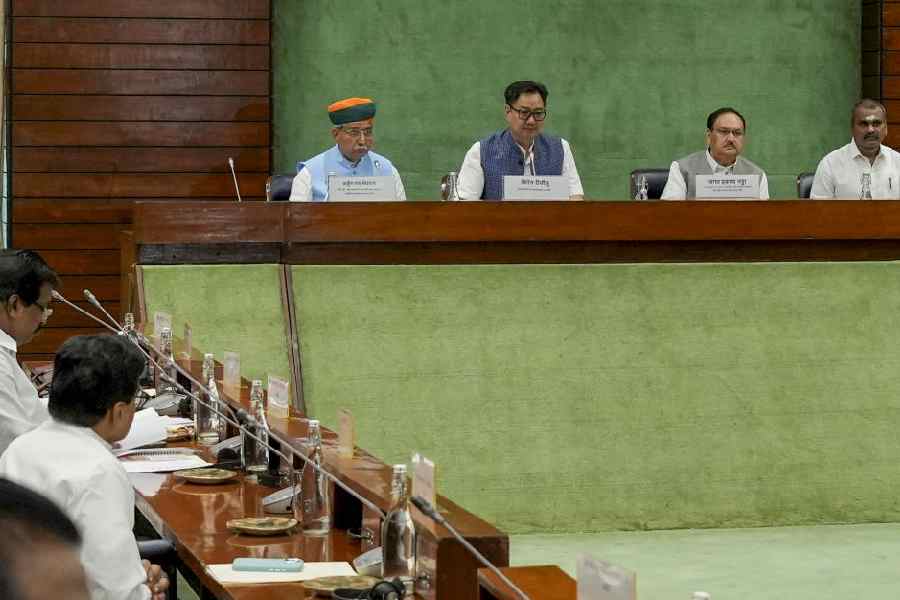 |
| Novelist William Makepeace Thackeray lived in this Alipore house as a child. Picture by Bishwarup Dutta |
A friend called me on my mobile the other day as he was driving down Free School Street and was passing by Armenian College. He had spied the all-too-familiar marble plaque declaring that the novelist, William Makepeace Thackeray, was born in house number 56B in that street on July 18, 1811, and stumbled upon the fact that the great Victorian novelist’s bicentenary is a year away.
Thackeray, whose work has been filmed by the likes of Stanley Kubrick (The Luck of Barry Lydon) and Mira Nair (Vanity Fair), was born in India. His work features many veterans who had served here, but he never returned to the country after his mother, Anne Becher, sent him to England following his father’s death.
William’s father, Richmond Thackeray, was the collector of the 24-Parganas in Bengal. His grandfather, also named William, was the first collector of Sylhet and both the novelist’s grandparents and parents were married at St John’s church.
 |
 |
William went to Charterhouse and at Trinity College, Cambridge, but gave up his studies, having gambled away some of his inheritance. He went to Germany and met Goethe, studied law at the Middle Temple, London, but had little enthusiasm to continue his studies. He lost his fortune in the Indian bank failures.
After art studies in Paris, Thackeray returned to London and started his career as a journalist. His wife’s insanity forced him to take up writing in right earnest. Satire and parody were his forte and the most notable novels he produced were Pendennis, The Newcomes and The History of Henry Esmond. The best-known of his works is Vanity Fair, the roistering story of epic proportions of English society in the Napoleonic Wars and the early 19th century, with its vast cast of characters who indulged in “a great quantity of eating and drinking, making love and jilting, laughing and the contrary, smoking, cheating, fighting, dancing and fiddling:…”
Thackeray died at the age of 52 in 1863 and was buried at Kensal Green Cemetery in London.
Short-lived though his stay in Calcutta was, Thackeray’s father left his mark on the map of Calcutta. Thackeray Road runs along the high walls of Presidency jail through a semi-rural area of Alipore adjacent to Tolly’s Nullah.
On the left of the wall are shacks of the jail employees amidst jungles of bushes and trees alongside khatals, sheds for cows. Some women, either jail employees themselves or their wives, people whose forefathers were from Bihar, gather around a tiny shrine to sing folk bhajans before sunset. Thackeray Road twists and turns through such picturesque environs, when a big bungalow comes in sight on the left amidst a jungle of weeds and groves of tall deodar trees. It has a porte cochere, and nobody seems to have tinkered with the structure. A few steps ahead to the right is a grander bungalow of gleaming white and olive green. It is obvious that it has been modernised, and has in the process lost many of its original features.
A high wall runs around it enclosing a large garden and lawn. This is the home of the district magistrate of South 24-Parganas, now occupied by Khalil Ahmed, IAS.
H.E.A. Cotton records the existence of two tablets at the entrance to the collector’s house. “The tablet upon our left tells us that ‘In this house resided Sir Philip Francis, Member of Warren Hastings’ Council from 1774 to 1780 AD.’ And the second: ‘William Makepeace Thackeray, the novelist, also lived here during his infancy, from 1812 to 1815’.”
The tablets were not there. Khalil Ahmed’s name was there instead. But after crossing the porte cochere, I discovered both the tiny plaques in the corridor. The ground floor is used by the staff, and on the right is a wooden staircase with elegant cast-iron rails. The Ahmeds live on the first floor, and amidst the domestic clutter it is easy to identify some pieces of old furniture, an easy chair on the spacious verandah, a carved dinner table and some other smaller pieces glowing with dark varnish. Behind the building is a lawn surrounded by trees.
The groundfloor staircase behind the house still boasts the original flagstones. In the front entrance the stones have been replaced by marble. The verandahs are still shaded by louvres which enhance the building’s grace.
Thackeray Road wends past this house to meet a large field, slushy even after a drizzle. Urchins play football, while a large, brownish shaggy dog takes rest in one corner. A signboard says it is the special training centre for the prison guard force of Calcutta police, 2004.










